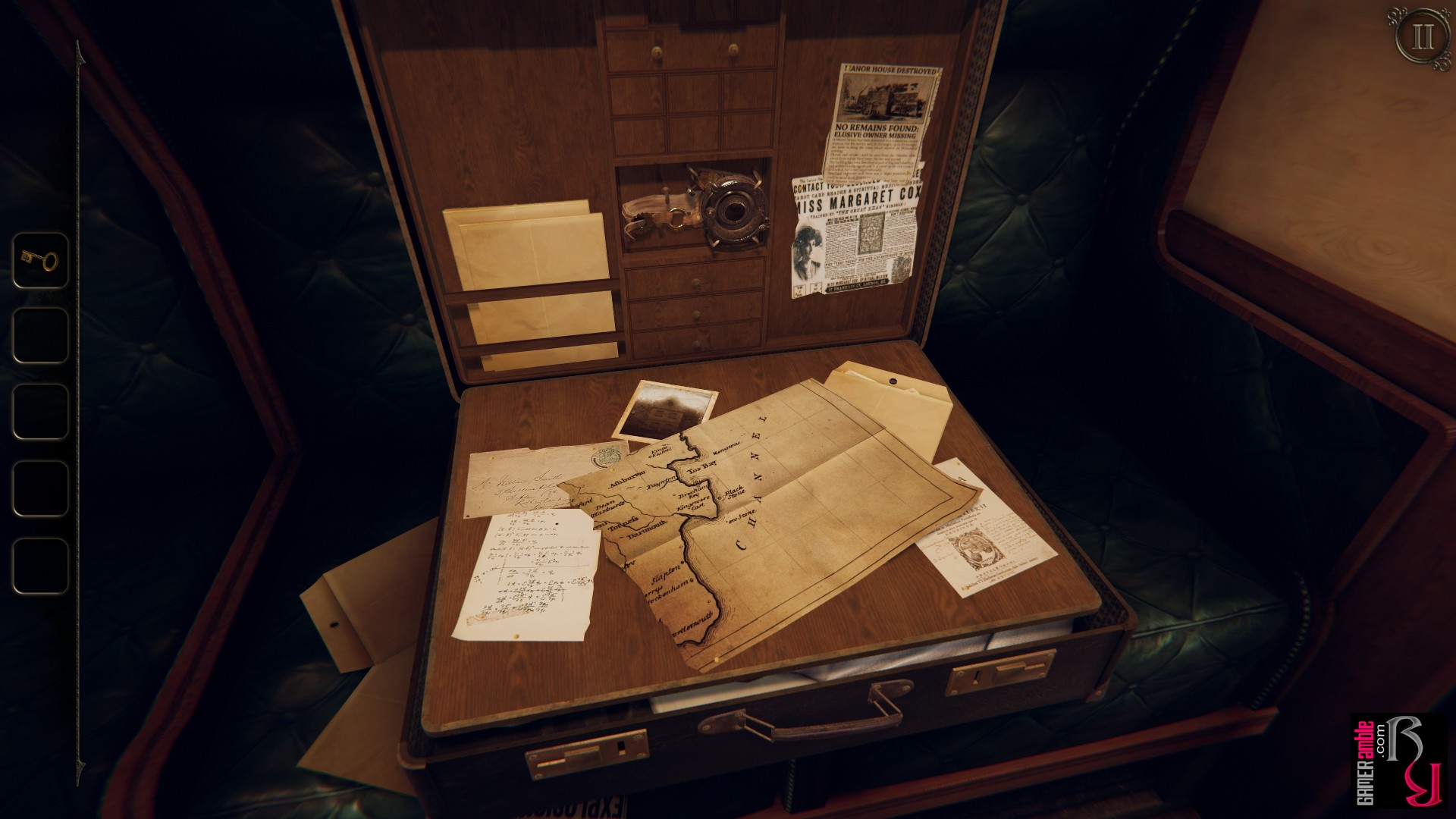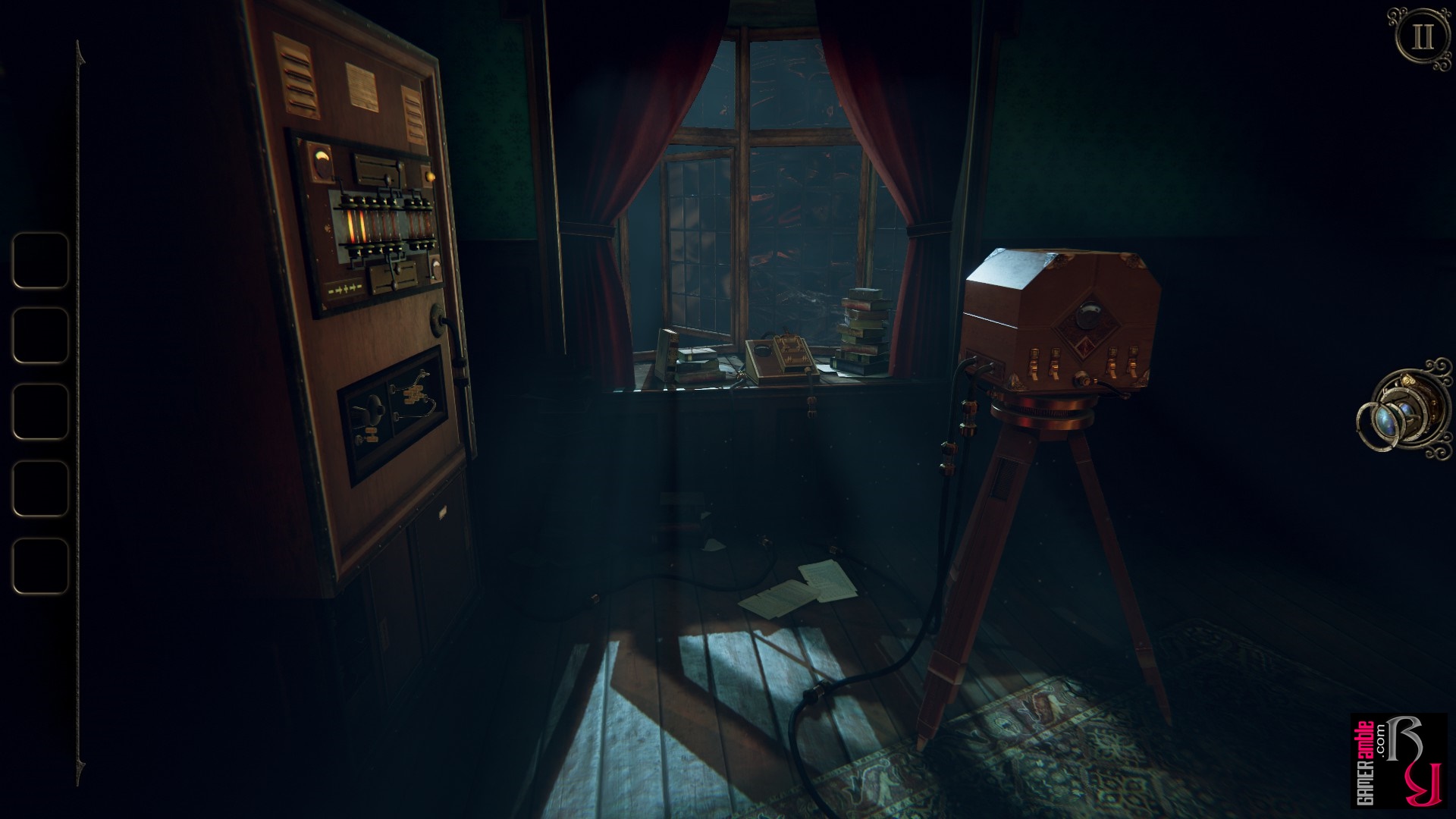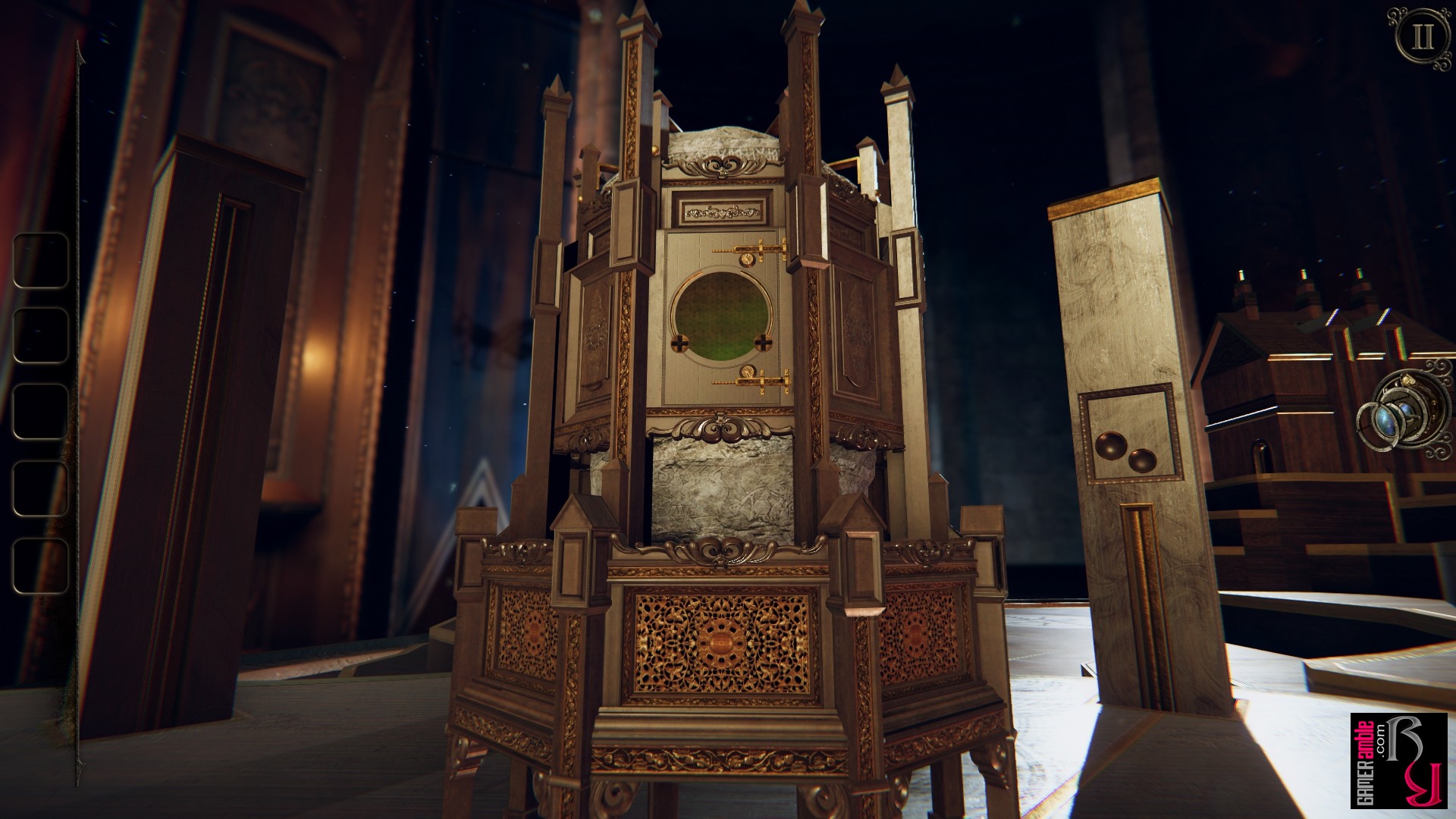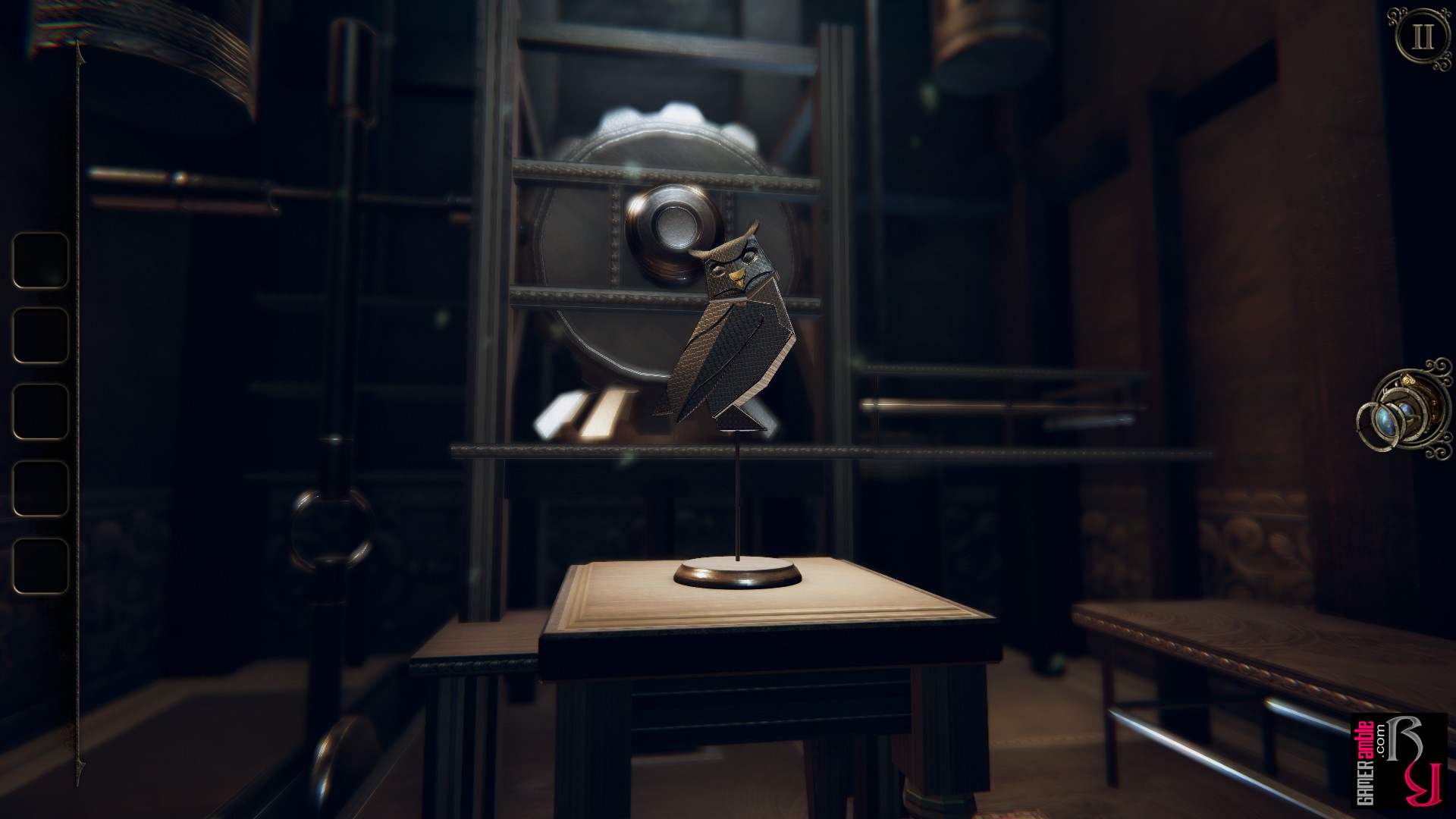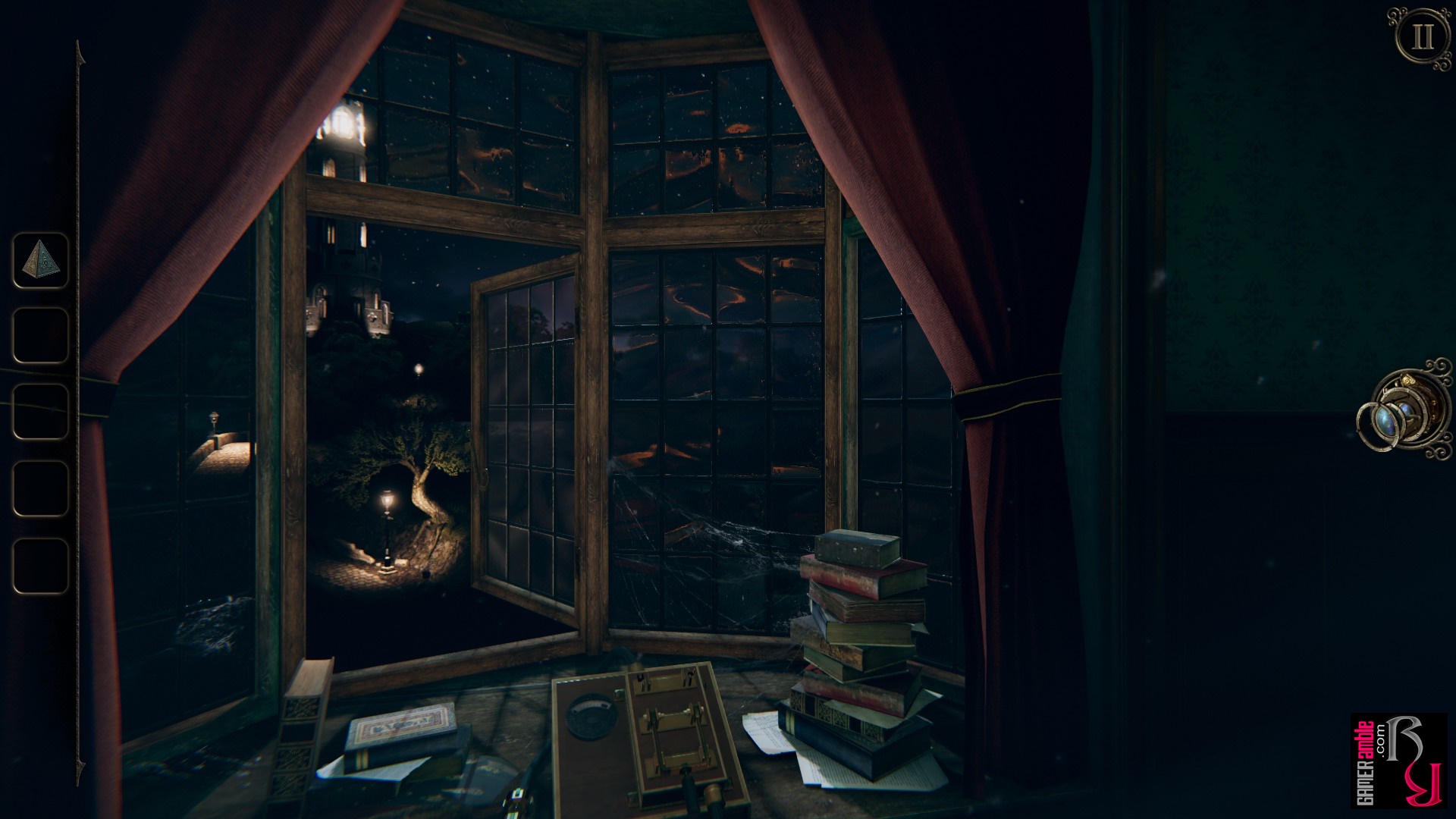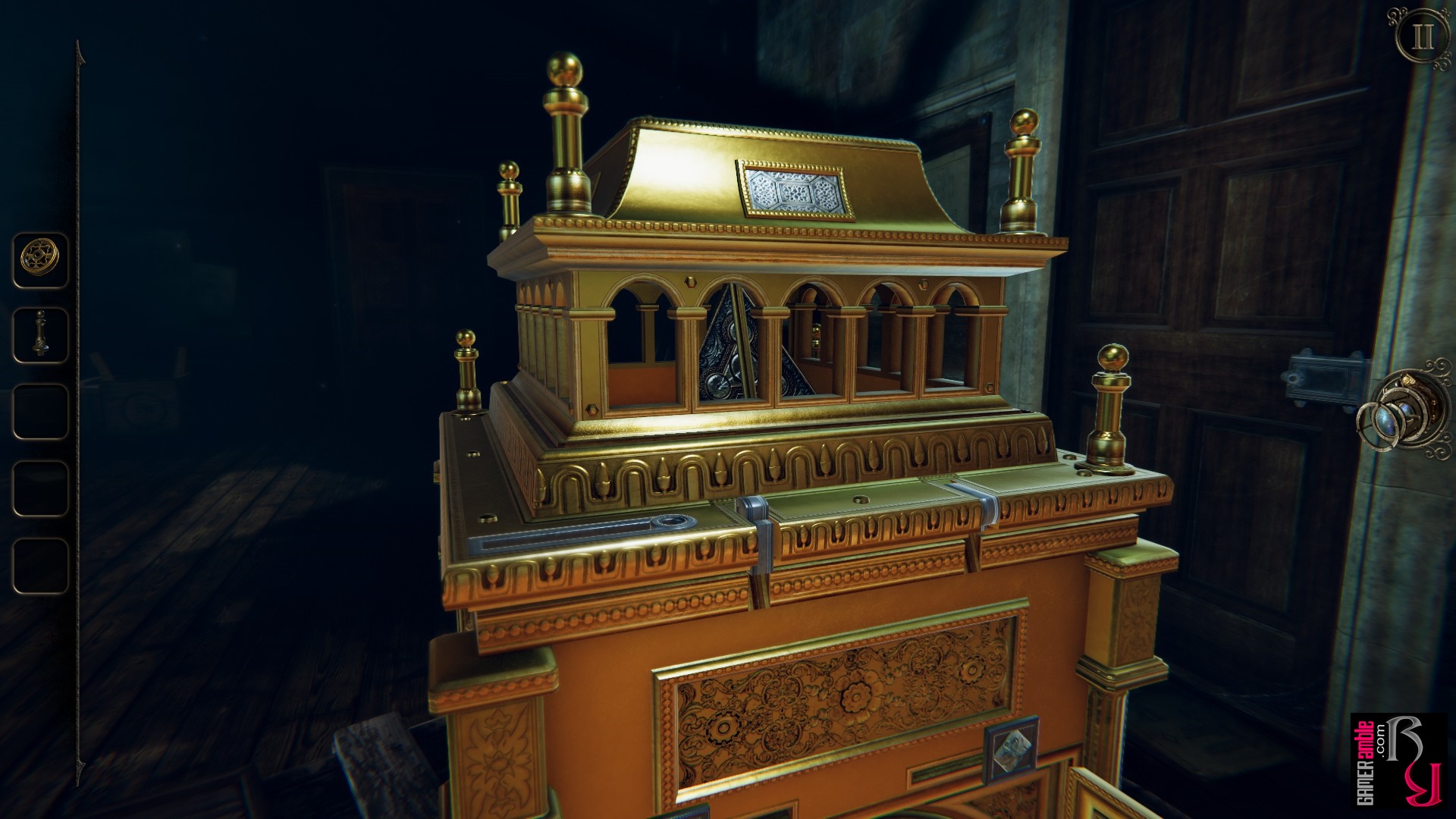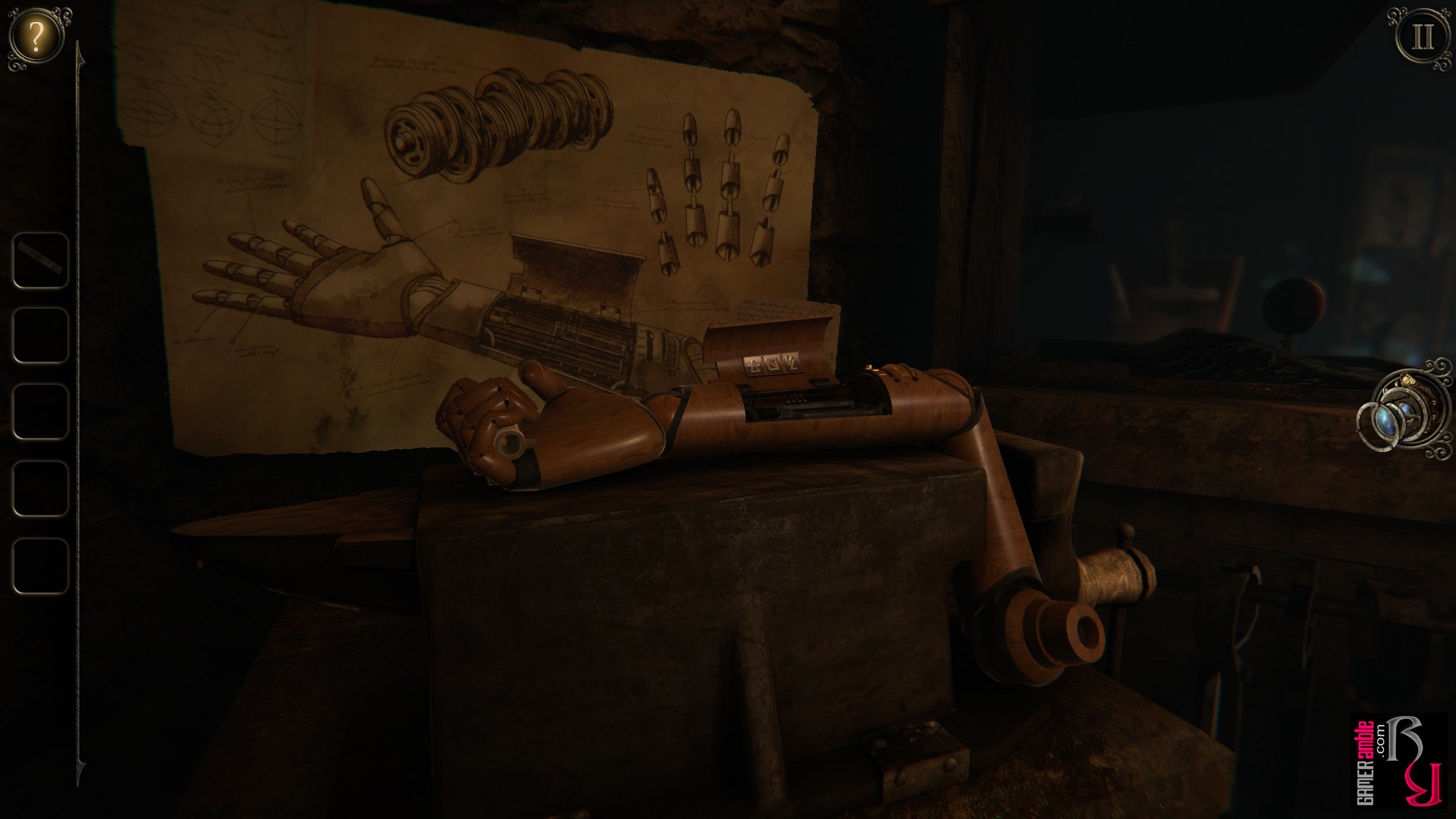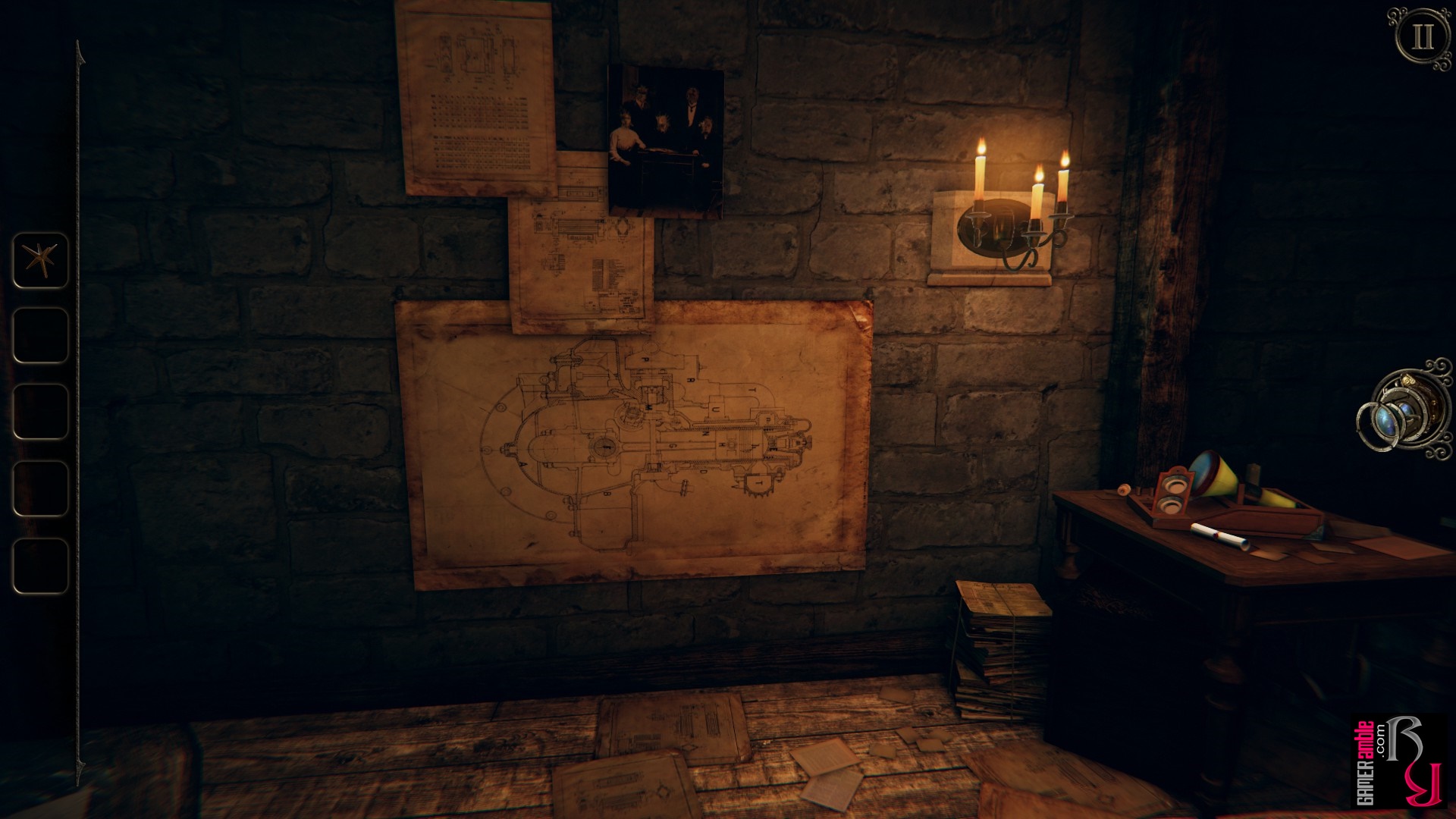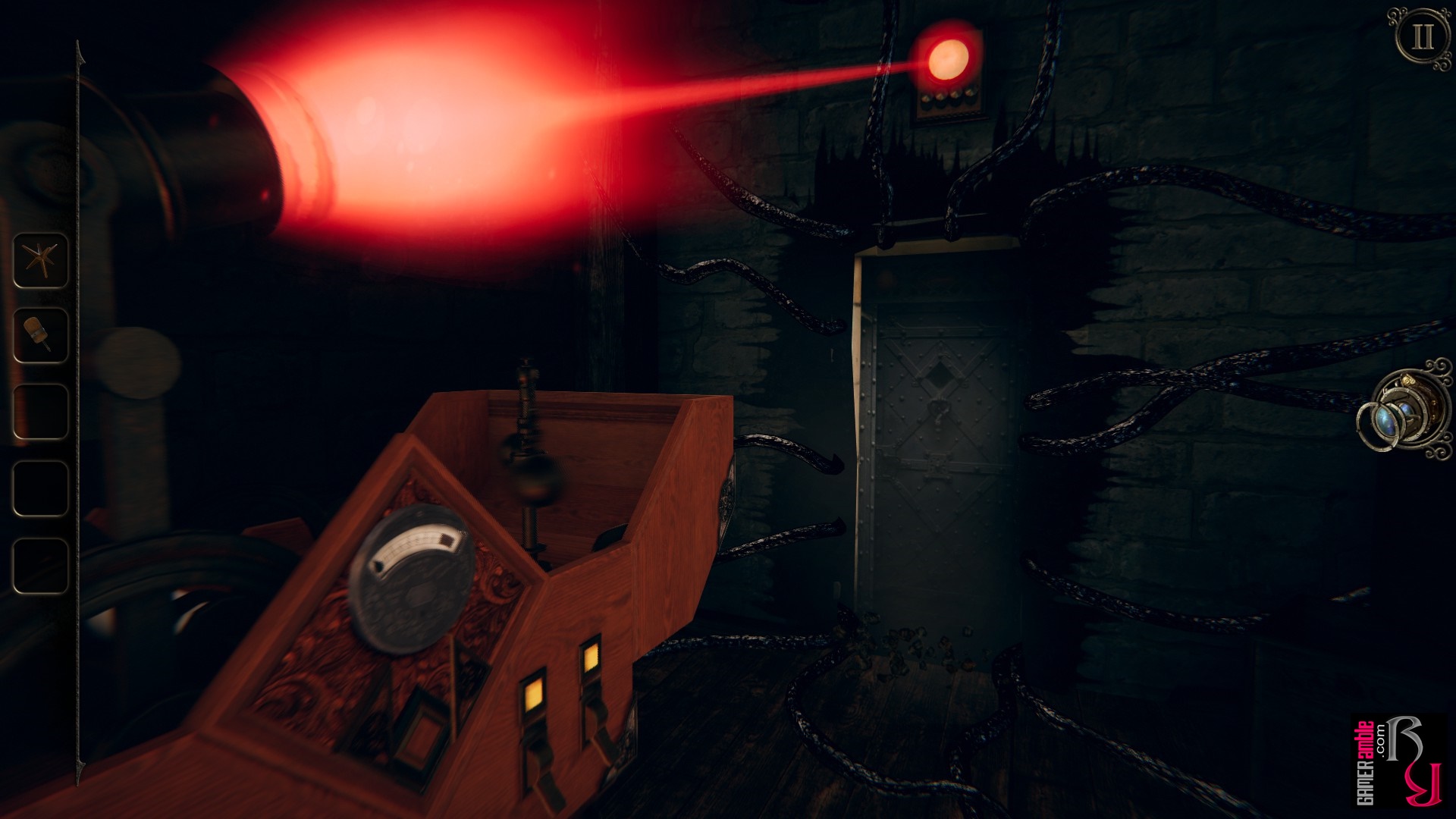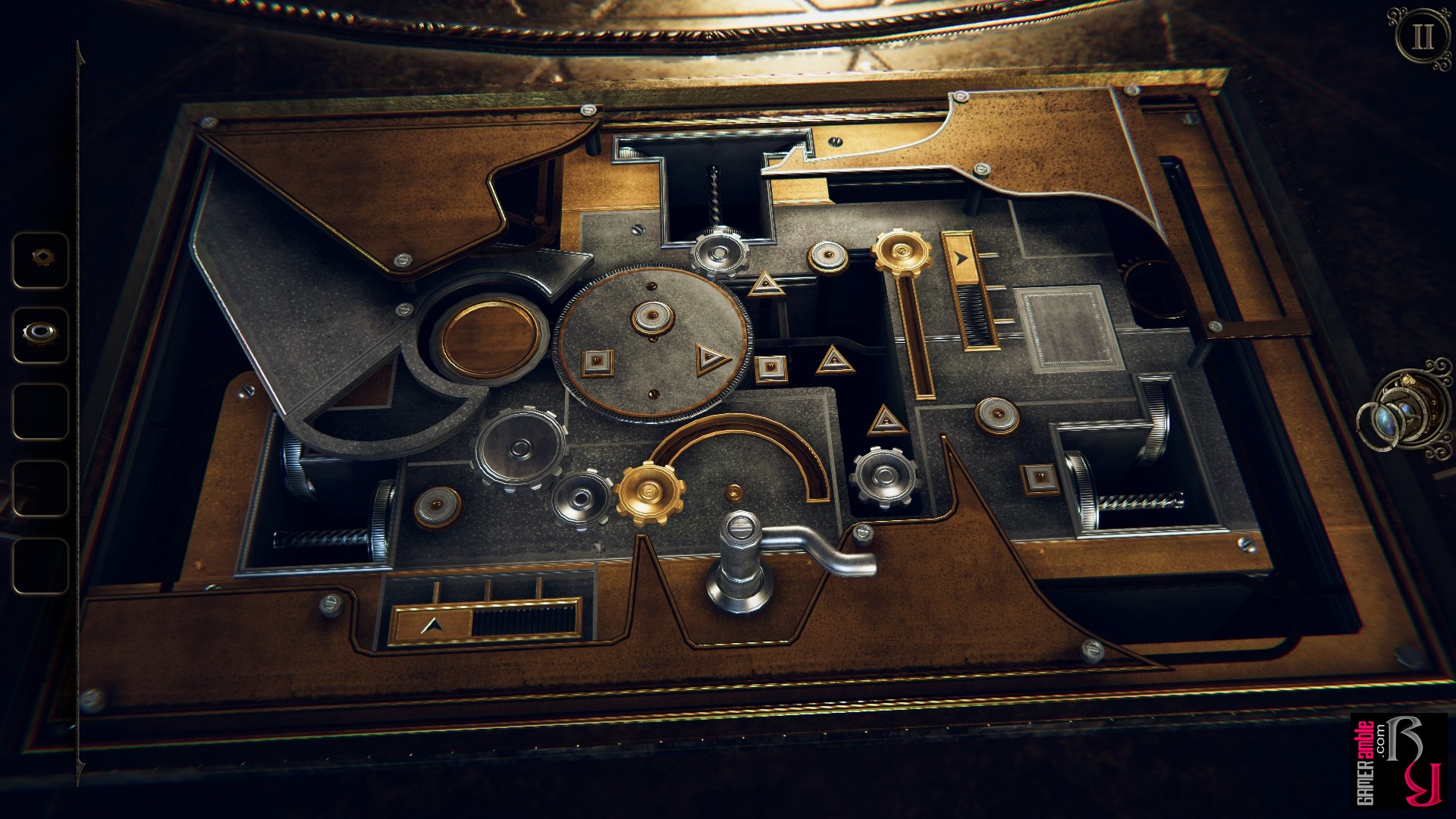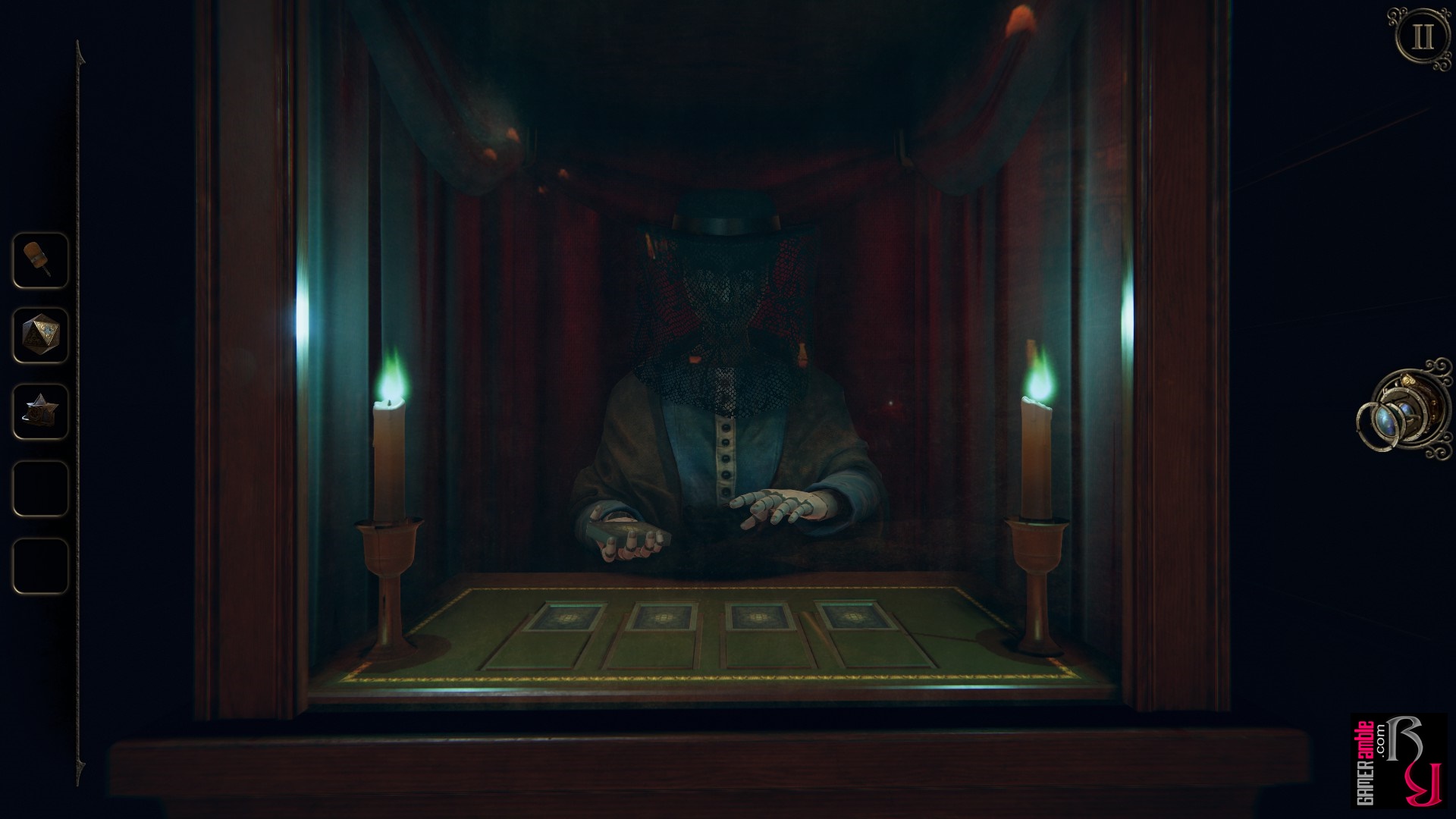The Room Three
Developer: Fireproof Games | Publisher: Fireproof Games | Release Date: 2018 | Genre: Puzzle / Adventure / Indie | Website: Official Website | Purchase: Steam
The Room Three opens aboard a train where the protagonist is taking a breather after their rather trying experiences in the first two games. However, the seemingly relaxing trip quickly takes a darker turn with the appearance of a Null Shard. Players familiar with the past games will know that reality does strange things when the Null becomes involved, and this is once again the case as the protagonist is whisked off to a remote island. Here, they find themselves in Grey Holm, a sprawling mansion owned by someone who refers to themself as “The Craftsman.” Judging by their notes, this Craftsman was responsible for the puzzles the protagonist had to overcome in the previous games. The Craftsman also appears to have a special interest in your ability to resist the Null, which is why he has prepared a series of trials for your arrival.
Playing The Room Three reveals how far this series has come since its debut on iOS a few years back. As always, Fireproof Games spent almost three years polishing up the game for its PC release, which is not something a lot of developers would bother doing. Their efforts have paid off, though, as The Room Three once again looks amazing. Each game in the series has continued to build on the previous one’s story and style, and The Room Three is no exception. Whereas The Room Two increased the scope of the first game, The Room Three takes things even further. Instead of being confined to a series of disconnected rooms filled with puzzles, players get to explore an entire mansion. The mansion serves as a central hub for the game, with each chapter leading to a different part of the island where a Null Shard is hidden.
Although the environments are much larger than the previous games, the gameplay will be very familiar, and puzzle fans are once again in for a treat. These puzzles strike a good balance between being satisfying to solve but not too obscure or difficult to figure out. Players who find themselves stumped can still use the generous hint system that doles out clues on demand. As always, we recommend turning off the hint system and trying to figure out the puzzles yourself to prevent a rather short experience from being even shorter.
Fireproof Games has re-built, re-textured, and re-lit every asset and environment in The Room Three, so it looks a lot more sumptuous compared to the already good-looking iOS version that came out in 2015. Grey Holm is a very spooky place, but players also get to venture to different areas in each chapter, such as a Clock Tower, Workshop, Observatory, and Lighthouse. The new environments now span multiple areas each, so players must be a lot more diligent when searching for clues and useful items. It’s still a relatively linear experience, but the fact that players actually get to explore and occasionally backtrack makes it feel less restrictive than the previous games. The puzzle designs are as intricate as always, and our favorite ones are still those that involve a mysterious box of some kind. There are more traditional puzzles, too, this time around. Still, despite carrying around more inventory items, there’s never a need to combine any of them like in traditional point-and-click adventures.
The Room Three is still viewed in first person as with the rest of the series, but despite the larger environments players are still restricted in terms of movement. Instead of walking around using WASD keys, exploring your surroundings is done by double-clicking areas of interest to zoom in. Double-clicking doorways will take you to new rooms, and the mouse can be used to pan around to get a good look. Initially, it feels very restrictive, especially as hotspots are not marked in any way, and you have to wait for movement animations to finish before you can interact with your surroundings. The smaller scale of the previous games made it less noticeable, but the larger environments and need to backtrack sometimes made us wish for a means to fast travel.
Firefree Games added a new lens to players’ arsenal for this third installment. The previous games required players to use their special lens to view things not visible to the naked eye, but this has been toned down a lot for part three. Instead, the new lens actually allows players to peer inside small items and explore them as if they were large environments. These areas are all clearly marked, so there’s no guesswork involved. The same goes for areas where the lenses are needed to see invisible clues, as these now have a visible green glow to them. Overall, it means less frustration from trying to figure out when and where to use your lenses, which is a good thing in our books.
Like the first two installments, the controls for Thre Room Three were initially designed for touch screens but work fine with mouse controls. Some of the tactile feel of the game is obviously lost when using a mouse, but manipulating objects and items still feels very satisfying. Our only gripe is that clicking and dragging are used to control both the camera and manipulate objects. This means that sometimes when trying to move or manipulate something, you end up changing the view instead. However, this is just a minor inconvenience and doesn’t detract too much from the experience. While larger in scope and size, The Room Three still retains that lonely feeling of the previous games, and a lot of this is thanks to the audio. The game makes use of music very sparingly and instead features plenty of ambient noises and great sound effects. Much care has gone into the sound effects in particular, so they all sound very satisfying. While not exactly scary, The Room Three definitely has a very unsettling atmosphere, and we really enjoyed the Lovecraftian elements.
Completing the five chapters on offer took us just over five hours, but after that, the game still had more to offer. Unlike the previous games, The Room Three features four different endings, and getting them all requires more effort. Thankfully, players don’t have to replay the entire game from scratch to access the alternate endings. Instead, there is an option available from the main menu to return to the mansion just before entering the final area. This allows players to explore a little more and solve all the optional puzzles to get their hands on the items needed. These puzzles are a little more obscure to find and solve than the main ones, and you won’t get any hints for them either. It took us an additional hour or so to figure everything out, and while the different endings are all very short, they feature some interesting scenarios.
The Room Three is the most ambitious entry in the series so far, but we still recommend that newcomers start from the first game. Jumping straight into this third installment will probably be a little confusing, and the previous two titles are still great games despite being slightly smaller in scope. If you are a fan of the series, then The Room Three is undoubtedly an instant buy, but puzzle fans in general and those who enjoy a good adventure shouldn’t miss out on it either.
System Requirements
- OS: Windows 7 or higher
- Processor: 2.8 GHz Dual Core Processor
- Memory: 4 GB RAM
- Graphics: Video card with 1024MB of VRAM
- DirectX: Version 10
- Storage: 4 GB available space


